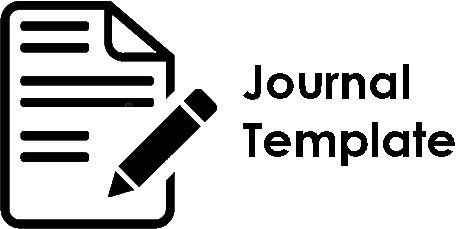Reklamasi Tambang Berkeadilan dan Mensejahterakan
DOI:
https://doi.org/10.31315/jmel.v7i2.9064Abstract
The mining industry has an important contribution to the economy and regional growth, but it also has the risk of environmental disturbance, so it is required to carry out reclamation. A special strategy is needed for the success of reclamation can improve the quality of life of the community and other organisms. The purpose of this research is to examine successful mining reclamation methods that can be implemented. This study uses a qualitative approach through social observation, questionnaires, in-depth interviews, and a literature review. Reclamation by PT. X consists of programs for the preparation, planning, implementation and management of reclamation areas. At the preparation stage PT. X conducts public consultations to listen to suggestions, opinions and responses from local communities, especially land owners who are rent. PT. X applies the participatory-accommodative principle. This strategy puts forward a bottom-up mechanism, namely the local landowners provide advice to PT. X related to the type and implementation of reclamation and PT. X conducts verification as well as careful and in-depth studies of technical implementation. Reclamation needs to be managed by providing an enclave zone that acts as a center for mining environmental protection. The area of the enclave zone should ideally be determined based on consideration of the area of the IUP, ecosystem typology, diversity, evenness and distribution of flora and fauna, as well as total carbon emissions. Just and prosperous reclamation is carried out by considering the existence and proper allocation of space for abiotic and biotic components including sources of livelihood for local communities.
References
Azim, F., Yunasril, & Prabowo, H. (2014). Perencanaan Reklamasi Dengan Revegetasi Pada Stockpile Di PT . Allied Indo Coal Kecamatan Talawi , Kotamadya Sawahlunto, Provinsi Jawa Barat. Jurnal Bina Tambang, 4(1), 92–99.
Darmawan, R., Klasen, S., & Nuryantono, N. (2016). Migration and Deforestation in Indonesia. In Migration and Deforestation in Indonesia (Vol. 2015, Issue 19).
Direktorat Mineral dan Batu Bara Kementerian Energi dan Sumber Daya. (2020). Aksi hijau di lingkar tambang: keberlanjuran lingkungan untuk masa depan (Vol. 1, Issue v). Kementerian Energi dan Sumber Daya Mineral.
Irsan, Helmanida, & Mutiari, Y. L. (2016). Kebijakan Reklamasi Pasca Tambang Sebagai Bentuk Pengendalian Lahan Bekas Tambang Batubara Ditinjau Dari Kewenangan Otonomi Daerah Di Sumatera Selatan.
Linanda, A., & Mukti, H. (2017). “Kewajiban Perusahaan Pertambangan Dalam Melaksanakan Reklamasi Dan Pascatambang Di Kota Samarinda.” Yuriska : Jurnal Ilmiah Hukum, 8(2), 66. https://doi.org/10.24903/yrs.v8i2.156
Nugroho, A. W., & Yassir, I. (2017). Kebijakan Penilaian Keberhasilan Reklamasi Lahan Pasca-Tambang Batubara Di Indonesia. Jurnal Analisis Kebijakan Kehutanan, 14(2), 121–136. https://doi.org/10.20886/jakk.2017.14.2.121-136
Oktorina, S. (2018). Kebijakan Reklamasi Dan Revegetasi Lahan Bekas Tambang (Studi Kasus Tambang Batubara Indonesia). Al-Ard: Jurnal Teknik Lingkungan, 4(1), 16–20. https://doi.org/10.29080/alard.v4i1.411
Pambudi, P. A., Utomo, S. W., Soelarno, S. W., & Takarina, N. D. (2022). Etika Tanah Aldo Leopold: Telaah Moral Atas Eksploitasi dan Kewajiban Reklamasi Tambang Batu Bara. Jurnal Ekologi, Masyarakat Dan Sains, 3(2), 37–44.
Pambudi, P. A., Utomo, S. W., Soelarno, S. W., & Takarina, N. D. (2023). Adaptive Vegetation Landscape Profile on Post-Coal Mining in Indonesia. Wahan Forestra, 18(1), 60–71. https://doi.org/10.31849/forestra.v18i1.11939
Prabowo, D., Maryudi, A., Senawi, & Imron, M. A. (2017). Conversion of forests into oil palm plantations in West Kalimantan, Indonesia: Insights from actors’ power and its dynamics. Forest Policy and Economics, 78, 32–39. https://doi.org/10.1016/j.forpol.2017.01.004
Ridwan. (2013). Perencanaan Partisipatif (Perspektif Kesejahteraaan Masyarakat) (T. Michael (ed.)). CV. R.A.De Rozarie.
Rinaldi, S. E., Suryanto, & Yassir, I. (2016). Biaya reklamasi dan revegetasi lahan bekas tambang batubara Di Kalimantan Timur. Prosiding Seminar Nasional Lahan Basah Tahun 2016, 356–361.
Sari, D. P., & Buchori, I. (2015). Efektivitas Program Reklamasi Pasca Tambang Timah Di Kecamatan Merawang Kabupaten Bangka. Jurnal Pembangunan Wilayah & Kota, 11(3), 299–312. https://doi.org/10.14710/pwk.v11i3.10855
Soelarno, S. W. (2022). Tambang Transformatif: Seri Knowledge Management tekMIRA. Balai Besar PengujianMineral dan Batubara tekMIRA.
Sudarmadji, T., & Hartati, W. (2013). Upaya Pemulihan dan Potensi Keterpulihan Lahan Pasca Tambang Batu Bara. Reklamasi Lahan Pasca Tambang: Aspek Kebijakan, Konservasi, Dan Teknologi, 11–23. https://doi.org/10.1017/CBO9781107415324.004
Supriatna, J., & Lenz, R. (2022). Sustainable Environmental Management : Lesson from Indonesia. Yayasan Pustaka Obor.
Woodbury, D. J., Yassir, I., Arbainsyah, Doroski, D. A., Queenborough, S. A., & Ashton, M. S. (2020). Filling a void: Analysis of early tropical soil and vegetative recovery under leguminous, post-coal mine reforestation plantations in East Kalimantan, Indonesia. Land Degradation and Development, 31(4), 473–487. https://doi.org/10.1002/ldr.3464
Downloads
Published
Issue
Section
License
Authors who publish with this journal agree to the following terms:
- Authors retain copyright and grant the journal right of first publication with the work simultaneously licensed under a Creative Commons Attribution License that allows others to share the work with an acknowledgement of the work's authorship and initial publication in this journal.
- Authors are able to enter into separate, additional contractual arrangements for the non-exclusive distribution of the journal's published version of the work (e.g., post it to an institutional repository or publish it in a book), with an acknowledgement of its initial publication in this journal.
- Authors are permitted and encouraged to post their work online (e.g., in institutional repositories or on their website) prior to and during the submission process, as it can lead to productive exchanges, as well as earlier and greater citation of published work (See The Effect of Open Access).


